波美侯和圣爱美隆产区的葡萄酒享誉世界,也使波尔多右岸闻名遐迩。但其实同样位于吉伦特河右岸的其他产区也能酿造出非常优秀的葡萄酒。一方面,这些葡萄酒不是特别出名,在品酒会或晚宴上也没有什么值得吹嘘的,但另一方面,它们的价格确实只是更有名的波美侯和圣爱美隆产区的一小部分。多年来,一些不太知名的右岸葡萄酒产区(例如卡斯蒂永丘产区)吸引了大量投资者,尽管一些地方拥有非常好的风土条件和技艺高超的酿酒师,但这些葡萄酒大多没能声名远扬。
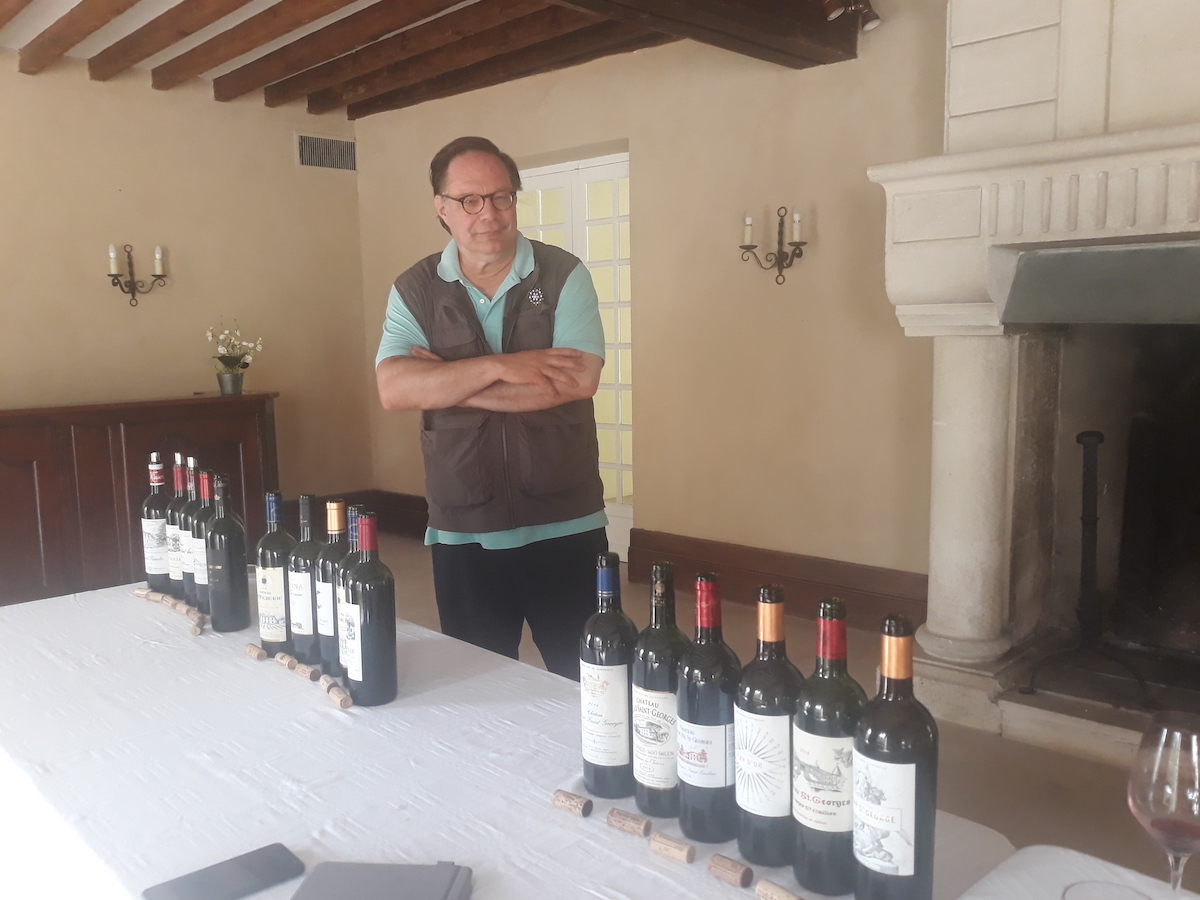
对于这种令人遗憾的状况,新一代酿酒人应该担起一部分责任,他们中的许多人为了达到“水准”而努力把葡萄酒做的很“大”(就是司空见惯地,坦率地说是有点令人厌烦的方式:颜色近乎黑色,极度浓缩,低酸度,丰满的酒体带有近乎糖浆似的甜蜜口感,再加上几乎另全世界橡木伐木工人都嫉妒的新橡木的风味),就是希望一些著名的酒评家给他们的酒一丝闪耀的机会。当然,考虑到许多这些产区的风土决定了他们最终的售价不可能是一流的,他们选择的这些酿造方式很快就被证明有明显的短板,经过很长一段时间对分数的追求,大多数的葡萄酒爱好者开始听从自己的味蕾,很多时候、甚至绝大多数时候,那些单独品鉴起来非常出色的葡萄酒却很难在用餐的时候去享用。最终,再多的新橡木桶或者类似的策略也无法将一款来自风土平平地方的葡萄酒水平提高,只能是令人绝望的希冀。不过令人高兴的是,许多不太知名产区的酒庄坚持继续酿造非常经典风格的右岸波尔多葡萄酒,它们没有炫耀奢华的新橡木桶风味或者甜蜜的、辛香料味,以及极度成熟的果味,而是展现出精致(有时在年轻时有点严肃)的口感和非常平衡的酸度。换句话说,葡萄酒不仅容易喝,而且是一种享受。在这篇报告中,我将只集中在右岸两个产区的葡萄酒:圣爱美隆卫星产区和拉朗德·波美侯产区。之后我也会讲到其他有趣的产区,比如弗龙萨克,加农·弗龙萨克和卡斯蒂永丘产区。
圣爱美隆的卫星产区
除了少数几个酒庄之外,大部分位于圣爱美隆卫星产区的酒庄对葡萄酒爱好者来说,其实并不是特别出名。这真是一个遗憾,因为波尔多右岸的这一区域拥有众多优秀的酒庄和价格合理的葡萄酒,往往比附近许多更著名的,更昂贵的,位于圣爱美隆产区生产的葡萄酒优秀。
这些卫星产区分别是:吕萨克·圣爱美隆、蒙塔涅·圣爱美隆、普伊斯金·圣爱美隆和圣乔治·圣爱美隆产区。他们位于圣爱美隆的东北角,和圣爱美隆产区一样,它们主要生产用梅洛和品丽珠葡萄酿造的葡萄酒(根据酒庄的不同,也会多多少少使用一些赤霞珠和马尔贝克葡萄)。
风土
直到1936年,这些卫星产区的村庄还使用的是圣爱美隆的名字来销售他们的葡萄酒,但在1936年其实他们自己的产区命名也已诞生了。直到最近,每个卫星产区才开始主张它们的独立性和独特性,但实际上至今只有圣乔治·圣爱美隆和蒙塔涅·圣爱美隆产区保持着完全的独立性。吕萨克·圣爱美隆和普伊斯金·圣爱美隆已经从“卫星”产区群体中分离出来,成为了圣爱美隆产区的一部分。有一种说法是,通过与圣爱美隆产区保持更紧密的联系,吕萨克和普伊斯金地区的酒庄及其葡萄酒可能会受到更多与葡萄酒专业人士见面的机会,从而对他们的葡萄酒给予更多关注。当然,这种情况真正发生的可能性是另一回事,但至少有人设法理解这一举动背后的逻辑。
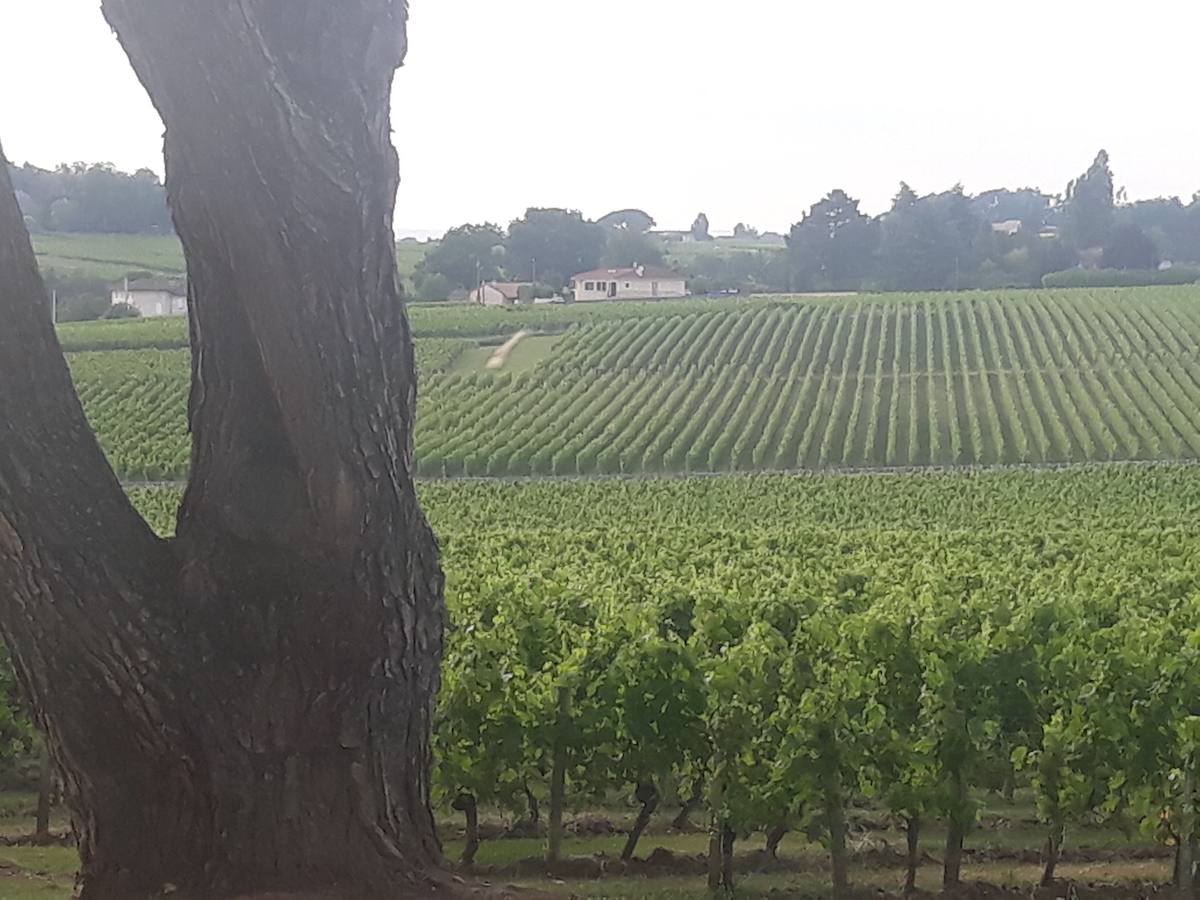
从远离多尔多涅河各个产区出现的顺序来看,第一个产区便是圣爱美隆,然后就是这些卫星产区:圣乔治,然后是蒙塔涅,接着是吕萨克,最后是普伊斯金产区(曾经这里还有另外两个卫星产区:紧邻着蒙塔涅·圣爱美隆产区的帕尔萨克·圣爱美隆,以及萨布乐·圣爱美隆:这个产区现在已经成为了圣爱美隆产区的一部分)。通常记载的都是说,在右岸这片森林其颈部的位置,土壤呈现出非常好的均质性,主要由糖蜜沉积和石灰质粘土的沉积物组成,排列在与多尔多涅河平行的山脊上。大多数情况下来看这么说没错,事实上所有的卫星产区它们都有相同的地质起源,但实际上它们的土壤和底土的多样性比人们通常认为的,无论是人们所说的还是写出来的,都要多。即使在土壤中只有微小的个体差异,每个卫星产区的土壤排水性和微气候也可能非常不同,如此每个卫星产区都有自己的风土特征,出产的葡萄酒也各有特点。因此,每个卫星产区都有自己的特点和特质。
例如,只有192公顷的圣乔治·圣爱美隆是最小的卫星产区,其土壤特性非常统一;此外,这个卫星产区完全朝向南方,正好面对着圣爱美隆产区。这里的风土真的和圣爱美隆没有太大的区别,而这个产区的葡萄酒也一直享有高度评价。它也是右岸海拔较高的产区之一(圣乔治的最高点达到海平面上89米:为了帮助你理解,波美侯的帕图斯酒庄的海拔高度只有40米)。相比之下,只有1500多公顷的蒙塔涅·圣爱美隆是面积最大的卫星产区;其地形由缓缓起伏的山丘组成(是肉眼可见的现实),也许这就是这一产区名称的由来(来自montagne,法语“山”的意思)。蒙塔涅距离圣爱美隆镇只有大约5公里,所以这个产区的一部分地块被视为所有卫星产区中最好的也就不足为奇了(还有圣乔治产区的部分)。虽然面积很大,但蒙塔涅的土壤在边界区域都呈现出显著的差异:与圣乔治的一些更精致的葡萄酒相比,蒙塔涅产区的一些黏土含量丰富的土壤,能酿造出酒体更宏大、更丰满、更丰富的葡萄酒。
相似的情况也出现在吕萨克·圣爱美隆产区(面积约1400公顷),和蒙塔涅产区相似,这里到处都是粘土,但在更高的山坡上会出现更多的石灰石,而在平原上则有更多的沙土(一般来说蒙塔涅的沙土较少),中间处主要是砾石土壤。事实上,在圣乔治和蒙塔涅产区很少有沙土出现,不像其他卫星产区和圣爱美隆地势较低的产区那样(一些怀疑论者说,这就是为什么圣爱美隆人想要赶紧将卫星产区收入麾下,因为一些卫星产区的石灰质粘土土壤比那些来自著名产区的沙土土壤更加优秀)。吕萨克产区位于蒙塔涅和普伊斯金产区之间,向北和东两个方向伸延,总体来说是较为冷凉的卫星产区;因此,这里比蒙塔涅产区更容易遇到春天的霜冻,而它与蒙塔涅之间只有一条小小的拉维河(Lavie)相隔。吕萨克的名字源于一位古罗马贵族(卢修斯Lucius),他在该地区拥有一座大别墅。普伊斯金·圣爱美隆(面积超过900公顷,其中700多公顷种植有葡萄)的名字来自当地一个古老的单词puy,意思是“出产强壮葡萄酒的山丘”,seguin一词显然是查理曼大帝统治时期一个军人的名字。这个卫星产区距离多尔多涅河较远,河流所带来的温度调控效果对它影响较小,因此,普伊斯金产区拥有一个相对冷凉的中气候;所以这里葡萄的采收时间往往比其他卫星产区晚一点(事实上,从温度上看,随着你朝着远离河流的方向,向东移动,那里的气温会越来越低,而且无可否认,所有卫星产区的气候都比圣爱美隆更凉爽)。此外,普伊斯金·圣爱美隆地区比蒙塔涅和圣乔治圣埃美隆的石灰石含量要少。显然,这些概括并不适用于任何一个卫星产区的某块特定的葡萄园地块,那些高价值的葡萄酒分布在整个圣爱美隆卫星产区之中。
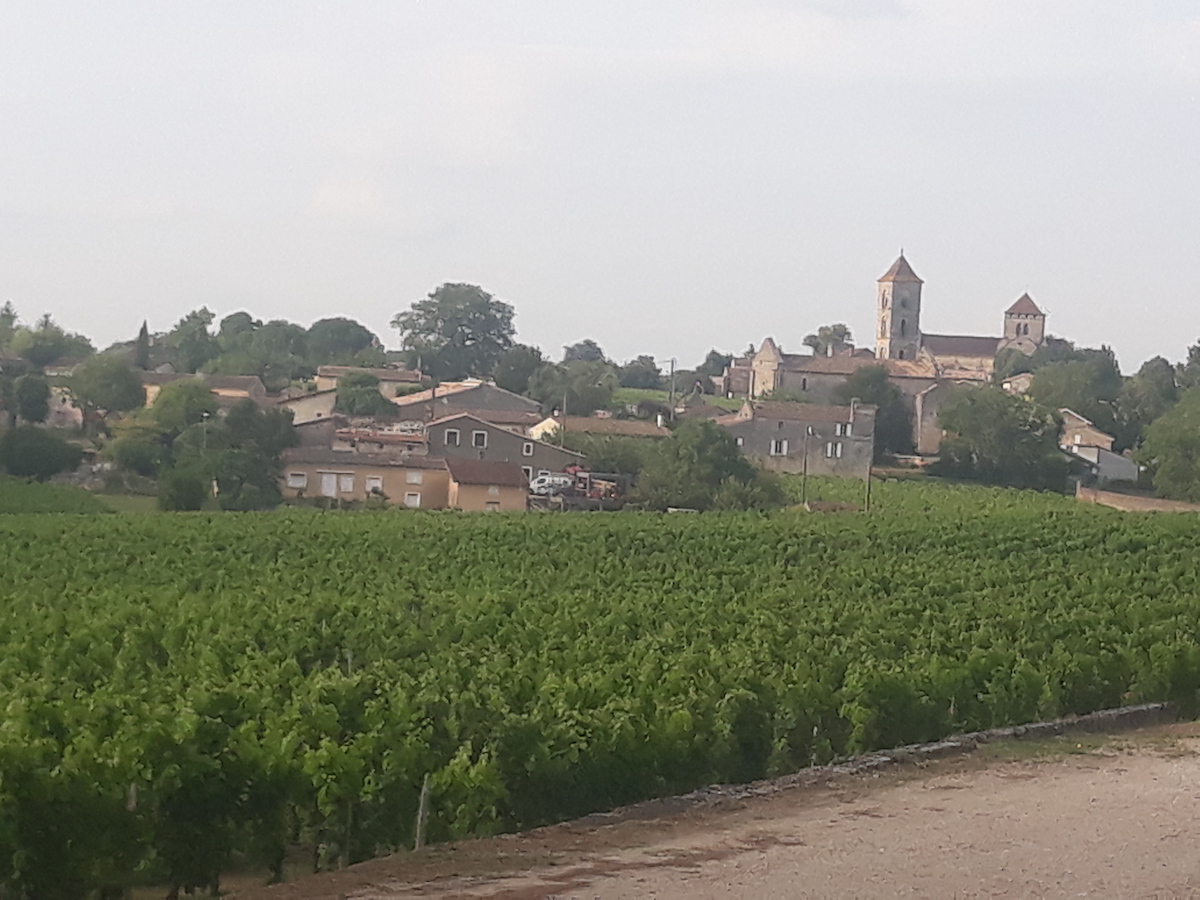
另一个非常重要的区别是,在圣乔治和蒙塔涅地区,家族经营的酒庄仍然是这里的主流情况。这与吕萨克·圣爱美隆和普伊斯金·圣爱美隆地区形成了鲜明对比,在这两个地区,酿酒合作社发挥着更大的作用。无论如何,请记住,从历史上看,最受追捧的是圣乔治·圣爱美隆和蒙塔涅·圣爱美隆的葡萄酒;如今也是产自这些卫星产区的葡萄酒通常能卖出最高的价格。尽管如此,所有的卫星产区的价格仍然非常平易近人,明智的波尔多爱好者知道去寻找它们。更好的消息是,2019年份,所有的卫星产区都出品了一些非常优秀的、有格调的葡萄酒;因此,虽然这篇文章关注的是目前市面上出售的葡萄酒,以及你最有可能在商店货架上找到的葡萄酒,但也有很多东西值得期待。
卫星产区的葡萄酒
这些圣爱美隆卫星产区的葡萄酒在风格上与圣爱美隆产区的葡萄酒有许多相似之处,这点毫不意外,只是没有达到圣爱美隆最好的那些葡萄酒的深度和浓度(但必须承认,在任何地方,很少有梅洛-品丽珠葡萄酒能做到这个水准)。卫星产区的葡萄酒在年轻时通常带有果香和辛香料味,但就像所有符合其标签的波尔多葡萄酒一样,它们也有很好的陈年能力,陈年过程中,它们会慢慢成熟,变成更丰满、更复杂、更多烟熏的风味。不过,虽然在瓶中存放一小段时间可以大大提高这些葡萄酒的愉悦度和复杂性,但它们不可能像波尔多最好的葡萄酒那样持续40年或更长时间的陈年。大多数卫星产区葡萄酒最好在葡萄酿造后6至8年饮用,持续最多12至15年(可能会继续发展或者稳定),能够继续进一步陈年的比较少见。一般来说,我觉得这些酒喝起来真的很愉悦,这取决于酒的年份,大约是标签上所显示年份的十年之后饮用最佳。
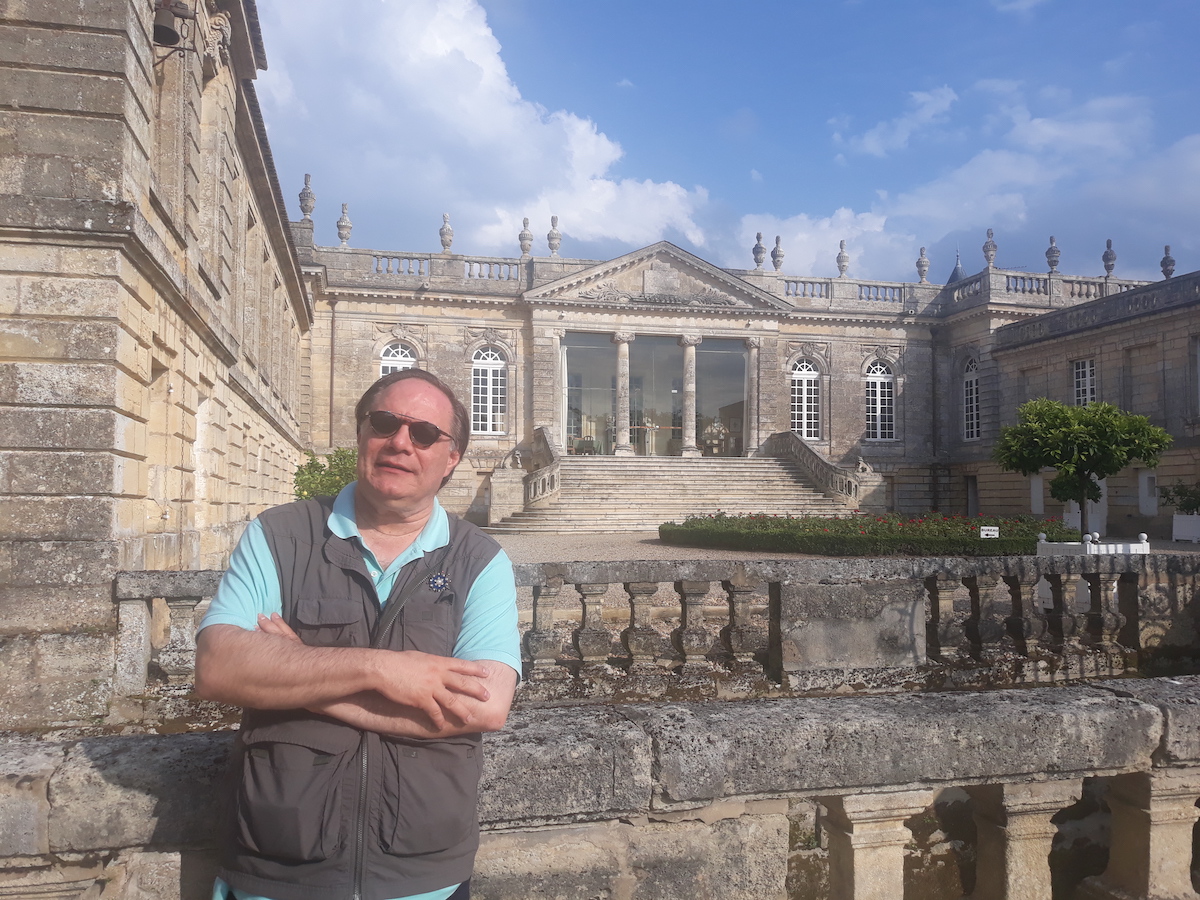
拉朗德·波美侯产区
拉朗德·波美侯产区的葡萄酒非常怡人,虽然缺乏像波美侯最好的葡萄酒那样的醇厚和深度,但值得注意的是,它表达出了冷凉气候下的梅洛葡萄酒和右岸风土的多样性。这个产区位于左岸的波尔多市东部约50公里,紧挨着右岸的利伯恩(Libourne)市的北部,靠近伊斯乐河(Isle)和多尔多涅河的交汇处。这个产区是在1936年12月8日正式创建的,但早在1884年,拉朗德·波美侯葡萄酒工会(生产商联盟)就已经创建了。拉朗德·波美侯比邻近的波美侯产区大,领土在拉朗德·波美侯和Néac村庄进行了扩张:事实上,很少有人意识到,甚至是葡萄酒专业人士,也不知道还存在“Néac”这个产区,只有产自这个村的葡萄酒才可以用这个命名,但据我所知,没有任何一家酒庄选择使用这个名称,他们更喜欢使用(也可以理解)更出名一点的拉朗德·波美侯产区来命名葡萄酒。
也许是因为拉朗德·波美侯和它更著名的邻居波美侯拥有部分相同的名字,但这两个产区的葡萄酒并不完全相似。不要相信那些说拉朗德·波美侯葡萄酒和波美侯葡萄酒相似,或者这么写的人(他们大多都是出于懒惰或完全缺乏认知),因为(大多数情况下)事实并非如此。事实上,拉朗德·波美侯和波美侯葡萄酒的味道确实不一样,如果没有其他原因,土壤在不同产区变化很大。
从地理位置上看,拉朗德·波美侯的风土位于一系列连续的梯田上,可追溯到第三纪,由比利牛斯山和中央高原形成时产生的冲积沉积物构成;一般来说,这里的土壤是粘土、砾石和沙子的混合(越朝着河流方向、越向西边沙土就更常见),在整个产区中很少会说到石灰石。在产区不同的位置,土壤中的粘土比例和深度有所不同。优秀的风土正是这些富含粘土的土壤,他们是拉朗德·波美侯产区最有趣也是最有潜力的部分(拉朗德·波美侯的土壤事实上和波美侯产区不同,只是和波美侯的某些部分相似)。在我看来,拉朗德·波美侯最好的两个葡萄种植地区都靠近波美侯产区,那里砾石和粘土都很丰富(事实上,这里的砾石含量比波美侯的大部分地区都要高得多)。Néac高原是著名的波美侯高原的延续,当然是种植葡萄的绝佳地点,它的山坡围绕着著名的图拉福酒庄(Chateau Tournefeuille)。所有向89号公路延伸的区域都有不错的潜力:过了这个“检查站”之后,葡萄酒的结构就没有那么强壮了(但花香更多),因为土壤中的黏土减少了。在气候方面,拉朗德·波美侯和波尔多所有地区一样,受到大西洋的影响,拥有适宜葡萄生长的气候条件,由于全球变暖,这里的夏季变得阳光明媚、温暖干燥,秋季降雨减少。因此,拉朗德·波美侯产区有潜力酿造出令人兴奋且易于饮用的葡萄酒,同时具有陈年潜力(事实上,我认为所有更好的葡萄酒都应该在收获后5 – 8年开瓶,然后根据年份的不同,之后的8年左右是它的巅峰试饮期)。聪明的葡萄酒爱好者,不仅仅是精打细算的人,都知道做功课了解多年来在该产区表现最好的葡萄酒的名字,因为拉朗德·波美侯有很多优秀的葡萄酒,而且价格便宜。
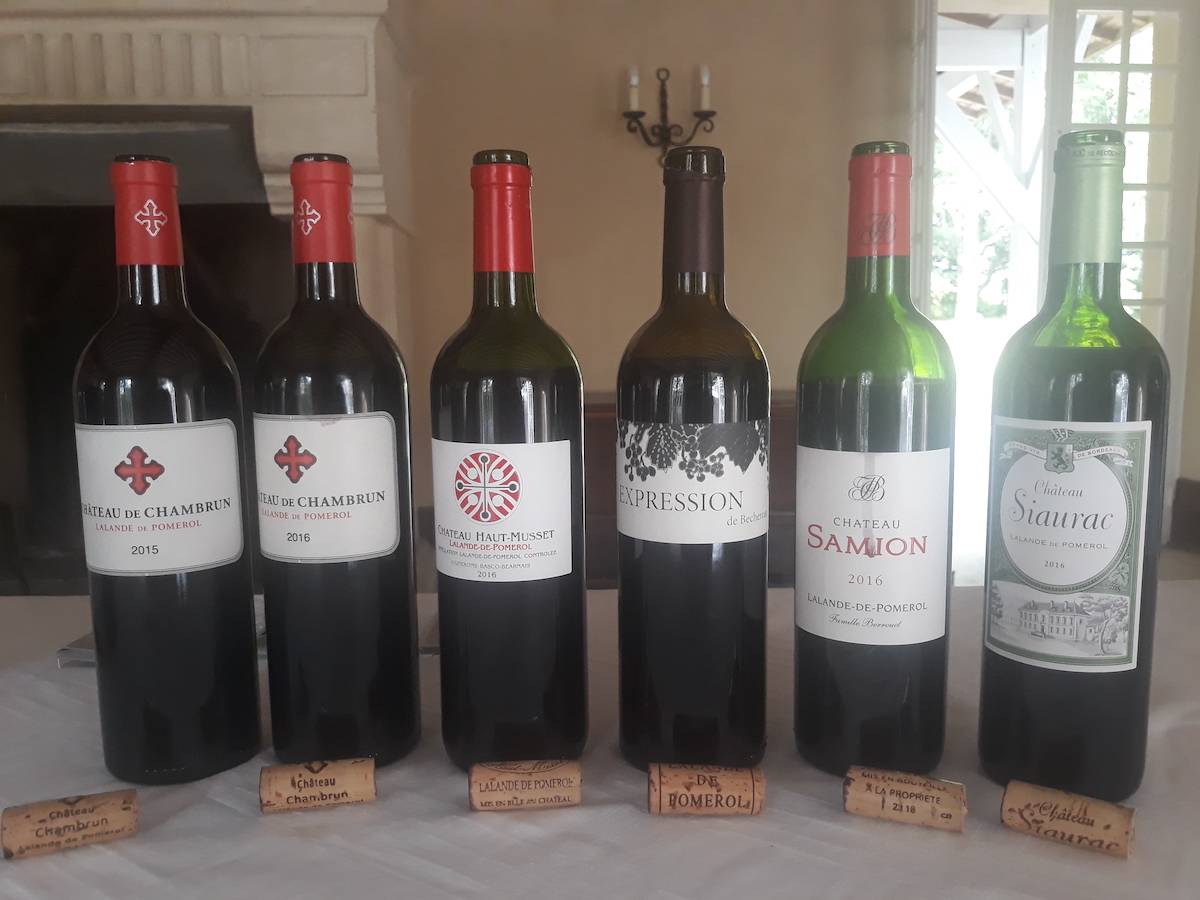
关于波尔多最近一些年份的简短记录
2018年有一个潮湿的春季,甚至还遭遇了冰雹,因此有不小的病害压力。接下来是一个炎热甚至酷热的夏天和一个晴朗的秋天,所以你可能会说这一年的天气里有能想象到的所有情况(并不都是好的情况)。也就是说,这一年份的酒似乎会非常的出色,如果是从它超强的酒体结构来看。不那么幸运的是2017年的标志是严重的霜冻灾害,大幅度削减了产量。左岸要比右岸好得多,虽然最近大家没有过多闲暇来关注2017,但左岸的顶级酒庄里肯定有一些非常优秀的葡萄酒。我想说,2016可以说是出类拔萃的一年。它开始时很不吉利,春天凉爽潮湿,但随之而来的夏天,温暖且夜晚凉爽,秋天很完美,让葡萄有个很长的成熟期。最终的葡萄酒不仅成熟、精致,而且有充满活力的酸度和美妙的香气。2015年份的葡萄酒展现出了浓郁的果香和力量感,这要归功于总体上这是较为温暖的一年(6月和7月几乎没有雨水,天气炎热),而8月则比往年更凉爽潮湿(出现了4次暴风雨)。收获的季节也遭遇了一些降雨,但大部分的葡萄都在藤上完好无损地挂着;如果一定要说有什么不同的话,初夏的干旱才是最麻烦的,它让一些红葡萄酒有粗糙的单宁。可以说右岸的情况最好,虽然左岸也出产许多上佳葡萄酒。总体来说,这是一个非常好的年份,尤其是波尔多的干白葡萄酒。
本报告中的大部分葡萄酒是在2020年7月至8月在法国品鉴的,以及2021年1月至3月在我目前所生活的上海的办公室品鉴的。
2018 Chateau Cap d’Or Saint-Georges St. Emilion 88
Fresh and easygoing notes of red fruit are accented by delicate herbal notes. I would have liked a little more juicy fleshy fruit, but this is pretty and ready to be drunk now. This 86% Merlot, 8% Cabernet Sauvignon and 6% Cabernet Franc blend is made from roughly 33 years old vines planted over nineteen hectares. Drinking window: 2022-2028.
2018 Chateau Cap St.Georges Saint Georges St.Emilion 88+
Dark luminous ruby. A little fruit-challenged, with slightly tough tannins presently and not enough fruit coming through. I think a little time spent in a good cellar will help this show better in a few years, as there’s plenty of potential in the glass. An 82% Merlot, 10% Cabernet Franc and 8% Cabernet Sauvignon blend, 50% was aged in new oak barrels. Drinking window: 2024-2028.
2018 Chateau La Courolle Montagne St. Emilion 87+
Dark bright ruby. Aromas and flavours of both red and dark fruit with hints of underbrush and spices. Enters fruity and promising, then tightens, becoming increasingly savory and compressed by over-extraction, leaving one to deal with harsh mouthcoating tannins. Red fruit notes linger nicely on the long finish, but this isn’t much presently. Maybe cellaring for another three to four years will help those tannins come around, but I’m not sure. Drinking Window: 2024-2028
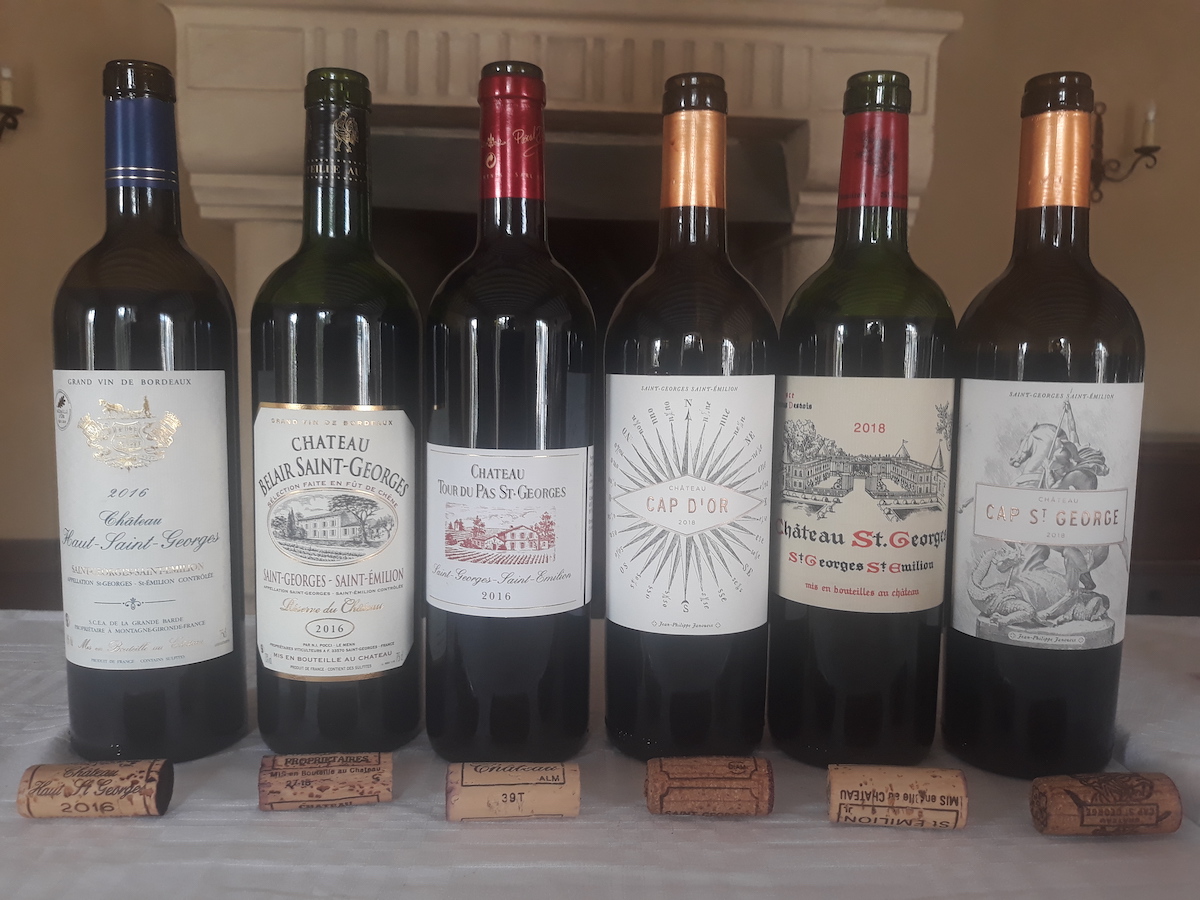
2018 Chateau La Picherie Montagne St. Emilion 89
Nice full ruby. Riper and sweeter than the 2016, this is long, clean, and fresh with an especially enticingly intense violet aroma on the nose. No blockbuster, but offers a clean and fresh mouthful of early drinking pleasure. Drinking window: 2023-2028.
2018 Chateau St.Georges Saint Georges St.Emilion 91
An outstanding 85% Merlot, 12% Cabernet Sauvignon and 3% Cabernet Franc bend that is clean, fresh and precise, boasting varietally accurate red and blue fruit aromas and flavours with a complicating presence of cedar and violet. Very nicely balanced, one of the star wines in my tasting. Drinking window: 2023-2030.
2016 Chateau Bechereau Expression de Bechereau Lalande-de-Pomerol 90
A 100% Merlot that is clean fresh long rich and round, offering noteworthy aromas and flavours of coffee, coconut and cocoa to go along with the typical violet and dark fruit notes of Merlot wines (but with a Bordeaux elegance to them) and some toasty new oak. The daughter of Jean-Michel Bertrand, who ran the property since the 1970s (an estate that has been in the same family since the middle nineteenth century) now runs the property, along with her husband Joël Dupas. Drinking window: 2023-2028.
2016 Chateau Bechereau Couleur Malbec Saint Georges St.Emilion 86
A curious, I dare say rare (for the area) blend of 82% Malbec, 9% Cabernet Sauvignon and 9% Merlot, this is slightly green on both nose and mouth, lacking a touch of ripeness. I’d certainly like to try this interesting wine in other, perhaps better, vintages, and will do my best to hunt down some other bottles to try. Drinking window: 2023-2028.
2016 Chateau Belair Saint-Georges Reserve du Chateau Saint Georges St.Emilion 87
Red fruit on entry, then too herbal and lacking in fleshy fruit, with nuances of orange peel persisting nicely on the medium-long back end. Could have used a little less extraction. Drinking window: 2023-2027.
2016 Chateau Carlina Montagne-St. Émilion 91
An extremely refined blend of 70% Merlot and 30% Cabernet Franc boasting a panoply of red fruit notes that are smooth, pure, long and very clean. This offers a lot of wine for the money, and is to my taste, a real winner. Drinking window: 2023-2028.
2016 Chateau de Chambrun Lalande-de-Pomerol 91
Perfumed dark and red berries plus balsamic oils on nose and palate, this is silky and smooth. Finishes with lovely clarity and cut. Well done. Drinking window: 2023-2028.
2016 Chateau des Laurets Puisseguin-St. Émilion 90
Easygoing and juicy, with uncomplicated aromas and flavours of strawberry and coffee mixed with hints of potpourri and violet. Drink this lovely red over the next six years or so for maximum enjoyment. Owned by the Compagnie Viticole Baron Edmond de Rotschild, this is a roughly 80-20 Merlot-Cabernet Franc blend aged in about 50% new oak. Drinking window: 2024-2027.
2016 Château Haut Bernat Puisseguin St.Emilion 89
Easygoing bright and fruity, with thicker notes of coffee and chocolate emerging on the back end to complement nicely the fresher blue and red fruit notes on entry. Bought by the Vignobles Bessineau in 1991 who set out to greatly improve the grounds and cellar, the estate has gone from strength to strength. Drinking window: 2023-2028.
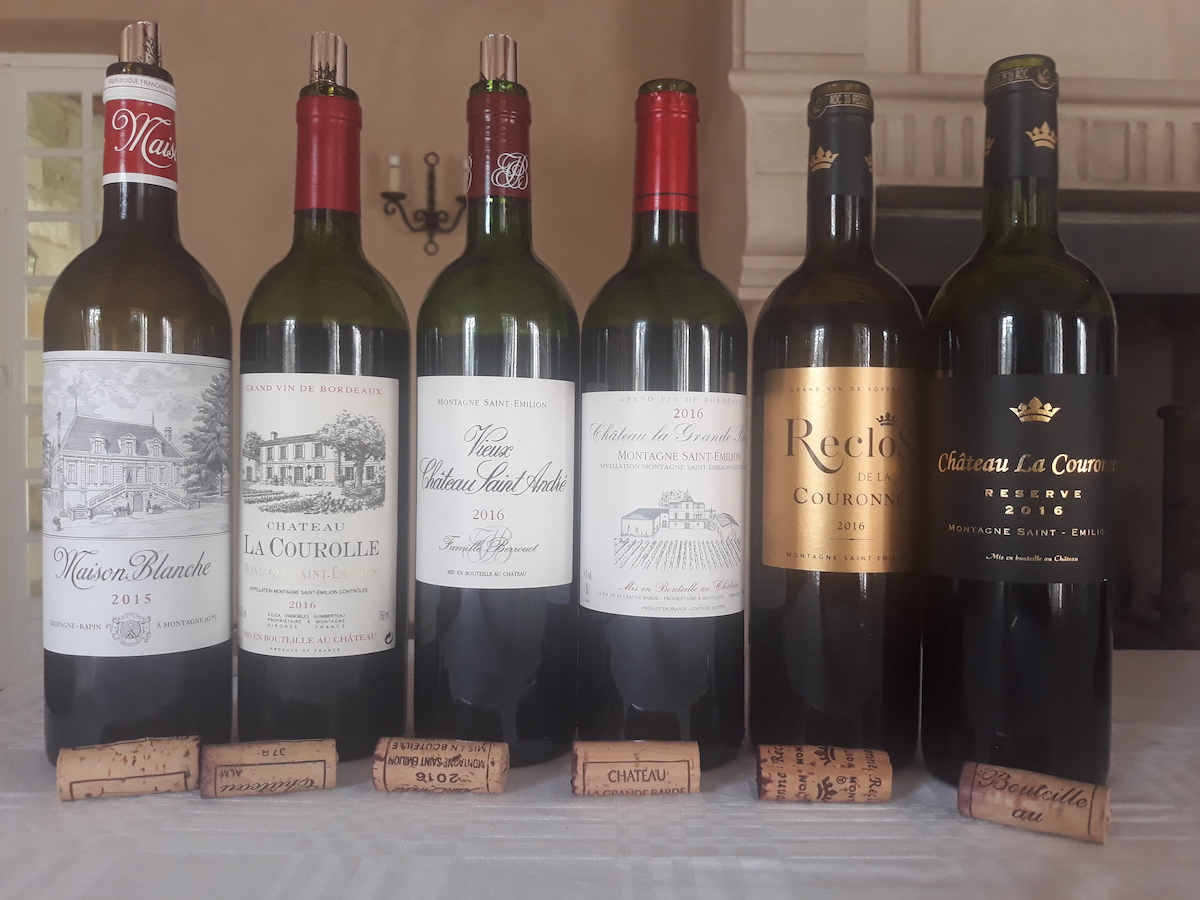
2016 Chateau Haut-Musset Lalande-de-Pomerol 91
Downright lovely Bordeaux here offering gobs of pure balck fruit adnd noteworthy notes of spices (cinnamon, nutmeg, star anise) and a buttery, herbal fragrance. Long clean fresh and very pretty, with fine grained tannins. Drinking window: 2023-2028.
2016 Chateau Haut-Saint-Georges Saint Georges St.Emilion 90
Savory red cherry, herbs and tobacco, plus mouthcoating tannins on the long slightly tight finish. This will need some time in the cellar still, but I wonder if the fruit will hold up. I’m betting it will. Drinking window: 2023-2028.
2016 Chateau La Courolle Montagne St. Emilion 88
More red fruit and herbs than most such Merlot-Cabernet blends (usually more marked by blue and black fruits) with hints of juicy acidity due to the limestone in the soil. But I found this to be a little over-extracted, thereby making the minerality and fruit stand out less than they might have. Drinking window: 2024-2028.
2016 Chateau La Couronne Reclos de la Couronne Montagne St. Emilion 91
This knockout 100% Merlot wine is the prestige cuvée made by Chateau La Couronne. First made in 1998 from a specific three hectare parcel of vines on the property, this is not at all over the top, neither too ripe nor unbearably chocolaty and massively tannic. It offers violet, blackberry juice and blueberry aromas and flavours in spades, finishing long and smooth with hints of coffee emerging on the aftertaste, which also features a nice smoky touch. Drinking window: 2023-2028.
2016 Chateau La Couronne Reserve Montagne St. Emilion 90
Another 100% Merlot wine but one where the vines are planted at a slightly higher altitude with more limestone in the soil than most. And you can tell, given the citrussy, balanced acidity that nicely lifts the blueberry and blackcurrant herbal-accented flavours nicely on the long back end. Not as extracted, or just plain better balanced, than some other wines I tasted from this property, owned by the Guimberteau family for 100 years. Drinking window: 2023-2028.
2016 Chateau La Grande Barde Montagne St. Emilion 90
Located on the plateau of Montagne at about 100 meters above sea level, on lots of clay with some limestone, this wine is very representative of the appellation. The wine is just lovely, offering delicate nuances of red and blackcurrant, cedar and coffee. Drinking window: 2023-2028.
2016 Chateau La Grande Clotte Lussac-St.Émilion 88
Juicy and fruity, an easygoing medium-bodied, forward Bordeaux offering early drinking pleasure. In 2016, Julie et Mathieu Mercier took over at the estate after years of it having been rented out to Michel and Dany Rolland. Drinking window: 2022-2026.
2016 Chateau La Grande Clotte L’Envolée Lussac-St. Émilion 90
A prestige cuvée made only in the best years, this enters and finishes with hints of violet, coffee, black cherries and blackberries. Drinks smooth, with sneaky concentration. Drinking window: 2022-2026.
2016 Chateau La Picherie Montagne-St. Émilion 90
Delicately juicy and floral, with lively red and black fruit nuances lingering nicely on the clean, fresh and focused finish. A really lovely wine that would make a fine lunch companion. Drinking window: 2023-2028.
2016 Chateau La Tour Bayard – Montagne-St. Émilion 90
Black fruits, violet, chocolate and licorice notes are clean pure and fleshy. Nice balance and focus here. I have always thought of this wine as one of the best made in the Satellite appellations, rather modern in style with its seductively soft fleshy fruit and fine-grained tannins. This is aged for 12 months in a combination of cement tanks (60%) and new and second fill barrels (20% each). Grapes are organically grown,100% destemmed, and the estate vinifies each plot separately. The estate also makes a top cuvée called La Tour Bayard l’Angelot that is almost 100% Malbec. Drinking window: 2023-2028.
2016 Chateau La Tour du Pas St-Georges Saint Georges St.Emilion 91
A 65% Merlot and 35% Cabernet Franc blend, this is an absolutely lovely, light to medium-bodied red wine that boasts fresh red fruit, orange peel and herbs aromas and flavours. Finishes long fresh and savory. Very well done. Drinking window: 2023-2028.
2016 Chateau Les Cruzelles Lalande de Pomerol 92
Gently textured, downright silky even, with very pure blackcurrant, violet and mineral nuances, complicated by a pungent lavender element. This is a real winner. Finishes long and pure. Aged in 50% new oak, this is a blend of 90% Merlot and 10% Cabernet Franc that never disappoints. The estate’s younger vines are used to make Chenade, another Lalande-de-Pomerol wine. Drinking window: 2023-2032.
2016 Chateau Lyonnat Lussac St.Emilion 90
Dark red in colour, with aromas and flavours that are equally dark red in nature (red cherry, raspberry), complicated by hints of licorice, espresso and dark chocolate. Smoothly full-bodied and juicy, this is quite nice. Even more importantly, it speaks of a wine from Lussac, and not some Saint-Emilion wannabe. Drink up over the next 10 years. Drinking window: 2023-2028.
2016 Chateau Samion Lalande-de-Pomerol 91
Clean, fresh and smooth, this very nice Bordeaux is less tannic and savory than many wines of the Appellation and is an absolute joy to drink. Lovely, but with sneaky concentration and power. Drinking window: 2023-2028.
2016 Chateau Siaurac Lalande-de-Pomerol 91
A 74% Merlot, 10% Cabernet Franc and 7% Malbec blend, this is silky and fresh, boasting dark fruit and dark chocolate aromas and flavours. Finishes long and smooth. Siaurac owns 46 hectares in a single, contiguous plot on the plateau of Néac and is well-known to wine lovers for its quality wines. Drinking window: 2023-2028.
2016 Chateau Tournefeuille Lalande de Pomerol 90
Always a dead ringer for a wine from Pomerol (which is actually rarely the case) this offers juicy blueberry and blackberry aromas and flavours nicely complemented by smoky cocoa, graphite and herbs. Long and smooth on the pretty floral finish. Drinking window: 2023-2028.
2016 Chenade Lalande de Pomerol 90
Always a fruit-forward beauty, this silky and very refined wine offers floral redcurrant and blackberry aromas and flavours that are gentle and pure. The aftertaste lingers long with smooth tannins and a rising violet note. It is a blend of 80% Merlot and 20% Cabernet Franc from the younger vines of Chateau Les Cruzelles, and estate bought in 2000 by star winemaker and Pomerol flagbearer Denis Durantou (who unfortunately passed away a few years ago: a genuinely nice man that was beyond talented and whom I greatly admired, his marvellous wines at Chateau L’Eglise-Clinet were some of Pomerol’s best) picked on September 24-29 (the Merlot) and October 6 (the Cabernet Franc) at a paltry 39 hectoliters per hectare. Aged in roughly 40% new oak. Outstanding wine. Drinking window: 2023-2026.
2016 La Fleur de Bouard Lalande de Pomerol 91
Blackberries, dark cherries, smoke, vanilla and licorice dominate on the nose and in the mouth. Happily less extracted than in the past, this offers very good purity of fruit and silky tannins. It is hard to express just how much better this is than the over extracted wines of the latter part of the 2000s and early 2010s. Drinking window: 2023-2028.
2016 Vieux-Chateau-Palon Montagne-St. Émilion 90
Nicely floral and fruity, with smooth tannins and well-balanced acidity. Finishes long and precise. Owned by Gregory naullet since 1999, the estate is situated on the plateau of Calon. Drinking window: 2023-2028.
2016 Vieux Chateau Saint-André Montagne St. Emilion 91
A simply splendid wine that is refined and perfumed, while offering admirable fruit-acid-tannin balance. An 87% Merlot and 13% Cabernet Franc blend that boasts lots of aromas and flavours of red fruit and medicinal herbs. This showcases well the estate’s soil of clay with limestone patches. About 15% was aged in new oak. Drinking window: 2023-2030.
2015 Chateau de Chambrun Lalande-de-Pomerol 90
Very ripe and round, with fleshy plum and cassis notes. Not the last word in elegance, but with an enticingly saline finish that provides noteworthy lift (despite the water deficit of 2015). Vinification takes place in a combination of 40 hectoliter French oak vats and barriques. The wine is aged in 75% new French oak for about 15 months before bottling. This is an important vintage for the property as it marks the passage of ownership from Silvio Denz (of Lalique and Chateau Lafaurie-Peyraguey fame) to Patrick and Sylvie Javanaud. Drinking window: 2023-2028.
2015 Chateau de la Couronne Montagne-St. Émilion 90
Deep in color, with layers of ripe, dark fruits, licorice, espresso and crushed stones, this is a very pretty, well-made wine that offers lots of ripeness and relative size, but that is neither over-extracted nor rustic. Very well done.Drinking window: 2023-2028.
2015 Chateau La Rose Perrière Lussac-St. Émilion 90
Fresh and juicy, with spice-accented ripe red and blue fruit aromas and flavours dominating, complemented by notes of mint and lavender. Smoothly tannic, and surprisingly powerful on the long slightly warm finish, I would drink this up over the next six or seven years. Owned by the Sylvain family, of tonnellier fame La Rose Perrière boasts one of the most ancient viticultural sites of all the Saint-Emilion satellites, given that monks planted vines here in the Middle Ages.Drinking window: now-2026.
2015 Maison Blanche Montagne St. Emilion 90
An absolute stunner, this lovely wine hits all the right buttons. Long clean and pure, with lots of plums and blackberries dominating the expressive nose and palate. Insidiously sweet with a nectar-like quality, this is one of the best wines in the tasting. Located on softly rolling slopes with sandy-clay soils that are lighter than most. Note that this wine chooses not to carry the name “Chateau” butbthe somewhat more down to earth one of “Maison”.Drinking window: 2023-2028.

 English
English

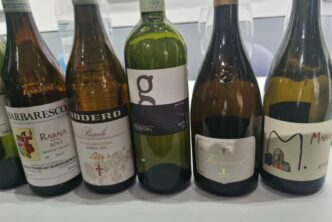

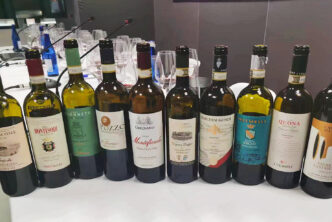
Dear Ian i would get like to get in touch. Tried to send you a message 2/3 weeks ago using this address might not be the proper one. Hope all good with you kind regards. Jm
iandomenicodagata@gmail.com
Ciao,
yes that is an incorrect email. I will rach you driectlya nd feelf ree toask me anything you like. Ian
Very interesting article on appellations too often underrated, offering some lovely wines.
Thanks, I look forward to writing similar articles on lesser known wines of other world areas, including Italy (probably the world elader in wines amde form little-known but very high quality grapes: see the Recantina article in TerroirSense Wine Review), Canada, USA, Germany, other parts of France, Chile, Argentina, Australia, NZ…stay tuned!